Identify

More than just a winter weather forecaster, the groundhog is a valuable resource. It is the biggest member of the squirrel family, and it is classified as a rodent.
Groundhogs may be a pest for farmers and homeowners, and they should be eliminated. Despite their desire for plants and crops, these hairy guests play a key function in the ecosystem as both consumers and components of the food chain.
It’s important to determine the habits of groundhogs so that your attempts to manage them will be successful. If groundhogs have established habitats on your land, it’s recommended to learn more about them.
Physical Characteristics

- Typical adult weight: 5-14 lbs.
- Usually measures 16”-27” from nose to end of tail
- Brownish-gray fur
- Stocky build with short, powerful legs
- Classified a rodent and part of the squirrel family
- Able to climb trees and swim
- Also known as a woodchuck, its interchangeable name
- Sometimes called a whistle-pig for the sound it makes when threatened
- Found from Canada to the southern U.S.
Groundhogs Versus Squirrels
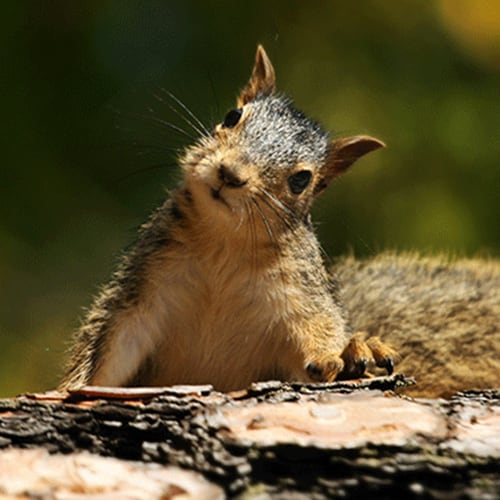
There are several ways to differentiate between the species, despite their being in the same general family and being confused with one other. For homeowners and farmers, these distinctions can be useful in determining if their land is being damaged:
- Groundhogs are typically larger and heavier than squirrels and may even appear rotund.
- The fur of a groundhog is brownish-gray, while squirrels have reddish-brown or almost completely gray fur.
- Groundhogs are outdoor rodents that build their homes underground. If given an opening or sizable crevice, squirrels will enter a home and live in wall spaces or in the attic.
- Groundhogs do not spread disease. Squirrels may transmit disease by hosting infected ticks, fleas, and mites.
- Groundhogs hibernate each winter. Squirrels do not hibernate and remain active throughout the year.
Life Cycle
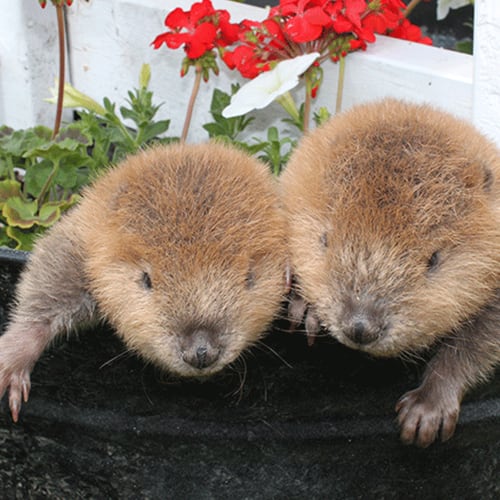
What Is the Life Cycle of a Groundhog?
Male reawakening from hibernation and venturing two to three acres to locate and join the burrows of females is signaled by spring (and even late winter). After a gestation period of around 32 days, the females give birth to two to six young. Despite being blind and hairless when it arrives at the age of three months, the newborn groundhog grows enough to go out into the world in search of a burrow.
Groundhogs return to being solitary creatures after the mating season is over in March or April. In reality, they never travel together or with their families. Throughout their three- to six-year lifespans, they also remain near their established burrows.
Groundhogs should be evicted or excluded in mid-to-late summer because they rely on seasonal behaviors.
Risks
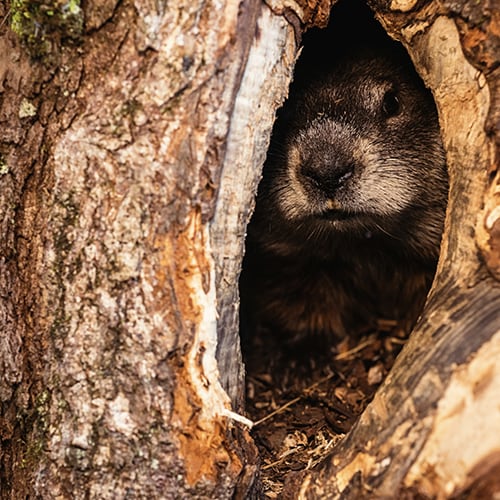
Can Groundhogs Transmit Diseases to People?
Yes, with a little qualification thrown in for good measure. Groundhogs may catch rabies and bite a person, which is very unusual. In that situation, talk to your doctor about how to treat the wound.

Why Are There Groundhogs on My Property?
An adult groundhog eats 1-1½ pounds of vegetation per day and is an herbivore with a massive appetite. The following plants and crops are among my favorites:
- Alfalfa
- Apples
- Berries
- Carrots
- Clover
- Corn
- Dandelions
- Lettuce
- Soybeans
There may be significant damage to garden and agricultural areas as a groundhog prepares for hibernation by eating even more food.
A groundhog burrow is an amazing example of animal engineering, and it’s located around food sources. These subterranean dwelling ranging from eight feet to more than 60 feet wide, with multiple entrances and spaces, run two to four feet below the surface. A burrow generally has two or three 10″ to 12″ wide entrances marked by excavated dirt, each of which leads to the next. In their burrows, groundhogs create distinct rooms for washing up. As a result, a single burrow’s footprint might be huge.
While their holes conceal a distinct worry for farmers: tractors may snap an axle driving over their subterranean houses, groundhogs aerate soil via their burrowing activities.
Inspect

Signs of Damage
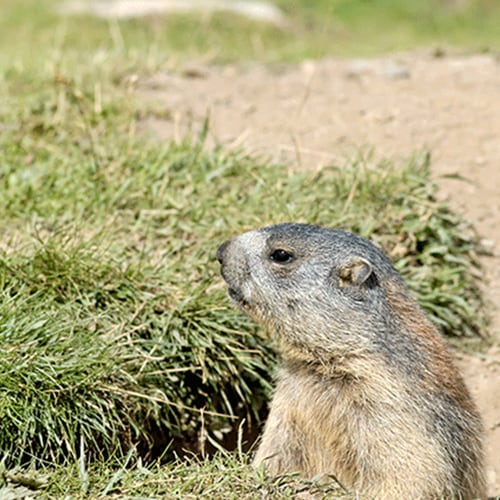
Groundhogs may be a risk for gardeners and farmers since they chew on green-leaved plants as well as a range of crops. Damage near your home may be signaled by four signs.
- Groundhogs bulk up in preparation of fall and hibernation (typically in August), leaving bite marks and hollowed-out crops as evidence. As groundhogs remain in their burrows and stay away from moving about throughout the winter, this is the case.
- Scent marking or groundhogs chewing on a surface to wear down the constant growth of their incisors may be seen on gnawed fruit trees or jagged or worn-away siding.
- Underground power cables have been reported to be eaten by groundhogs, causing electricity outages. A groundhog works to chisel its teeth, thus hoses in motor vehicles are vulnerable.
- Groundhogs’ underground activity may damage pastures and fields by churning the earth and possibly destroying farm equipment. This isn’t a widespread issue, fortunately.
What Are the Sounds and Signs of Groundhogs?
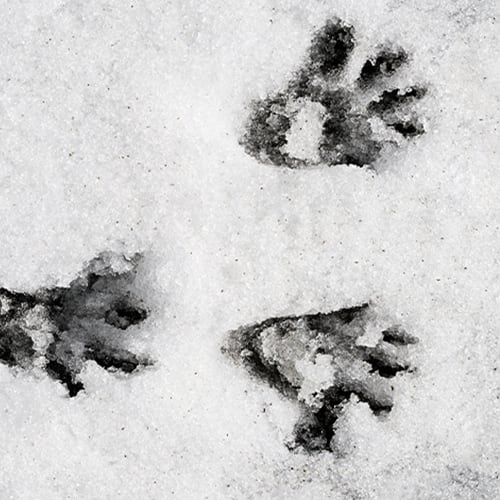
Since these prints aren’t likely to leave a significant impression in the soil, identifying them will be difficult. You may be able to detect the contour of four toes in a groundhog’s front paw, which is roughly two inches long. The rear foot is five-toed, similar to the front foot in size.
They have a unique sound that set them apart from their music. Due to their shrill whistle and the “tchuck, tchuck” sound they make when they’re threatened, Groundhogs are often referred to as woodchucks.
Where to Find Them

Groundhog burrows may be found under patios, decks, stored lumber, or even garages. Homeowners take note: groundhog burrows may be found. They may be found in pastures, fields, road sides, fencerows, and along the boundaries between wooded and open regions where the earth stays dry. They’re often seen there away from houses and developed regions.
These rats, however, are uncommon in huge numbers or even in small groups. When it comes to constructing an underground house, they are hardworking. They have a strong feeling of direction and will seek out a location that is shady and has moderate or cold temperatures.
Seasonal Behavior
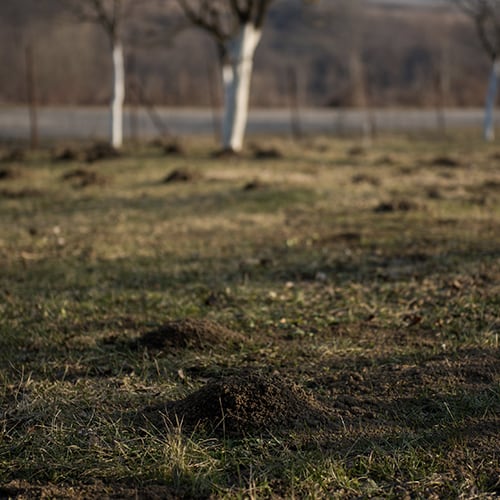
- Groundhogs hibernate in their burrows from mid-October to February, when the weather changes from warm to cold. When temperatures drop, they pack on weight and survive on their fat reserves, which makes sense in light of their eating habits.
- Groundhogs are most active in the spring as the weather gets warmer for two reasons. Groundhogs emerge from their burrows in the mornings and afternoons, first ending hibernation. Males seek out the burrows of nearby females during the mating season, which starts in March and ends in April. During this period, groundhogs will be most active and noticeable.
- Summer: For the majority of the day, this rodent is forced to retreat into its burrow due to increasing temperatures. During the day and at night, groundhogs will only go out to hunt for food.
Prevent

Getting rid of groundhogs is arguably more important than preventing them in the first place. Groundhogs can return to your property and continue to cause problems if you do not take the required steps toward prevention.
1.Fencing

Groundhogs can be deterred from digging into your yard by installing a fence. Like a conventional privacy fence, it may be made of wood or metal, but you’ll need additional criteria to deter groundhogs from climbing the barrier or tunneling beneath:
- Make sure that any openings in the fence (between slats of wood or holes between metal wiring are no larger than three inches.
- Dig the fence into the ground at least two feet deep.
- The fence should not be a straight line from the ground up. Instead, try to give it a slight curve at the top to make it harder to climb, and have it extend parallel to the ground at the very bottom that is dug into the earth. With this feature, groundhogs will stop digging once they hit the parallel portion rather than realizing they can back up and dig underneath it.
2. Introducing New Food Sources

Introducing new food sources farther away from your property may seem counterintuitive, but if you give groundhogs more places to feed, there’s a chance they’ll choose that instead of the plants in your garden. Groundhogs have been shown to be attracted to the following plants:
- Clover
- Alfalfa
- Basil
- Beet greens
- Zinnias
- Chrysanthemum
- Parsley
- Green beans
3. Sanitize Your Yard

If Groundhogs can detect scents of plants, they are more likely to enter your property. Pick ripe fruits and vegetables as soon as possible, removing any falling or rotting parts. Remove any food from your yard.
You should also check to see that your trash bins are tightly shut and aren’t emitting any smells. Groundhogs may be repelled from certain cuisine odors, but if you cook a lot and dispose of leftovers, try double bagging them before dumping them straight into the trash bin.
Treat

Many homeowners can attest to the fact that groundhogs can be a tremendous nuisance, even if they are on their own day on the calendar. They feed on plants when they surface on the ground and are also known as woodchucks because they burrow underground to flee predators.
They have similar habits to other ground-dwelling animals, such as voles and moles, but they pose their own set of unique problems.
Groundhogs are small enough to be mistaken for cats or dogs. They dwell underground for the majority of their lives. These much bigger animals, like voles, feed aboveground and have an impact on both soil and vegetation, but they may wreak havoc in the form of wrecked roots and shattered foundations in structures.
Treatment Methods
Bite marks, chewing, and bare crops around your home throughout the summer are examples of groundhog damage. Groundhog burrow entrances will be around eight inches wide, compared to other signs of ground-dwelling wildlife. Since they don’t create raised tunnels or runways, there won’t be any other indications of them on the ground. Groundhogs, on the other hand, are active during the day and may be seen intermittently emerging from their holes.
You can begin a set of treatment and prevention methods on your own or through a professional wildlife removal company once you’ve successfully inspected and identified the presence of groundhogs on your property.
1. Eliminate Nesting Opportunities

Groundhogs like to keep the openings to their burrows near places of cover, like thick brush and tall grasses.
- Maintain your yard regularly and clean up piles of leaves, sticks, and wood.
- Keep your grass cut short.
- Make sure that the leaves on your shrubs and bushes aren’t too low to the ground or thick.
- Fill in any pits or holes that you already have in your yard. Since they won’t have to build as much of a burrow, groundhogs might find them appealing.
Groundhogs prefer to dig in drier soil, unlike many other ground-dwelling pests. Keeping your soil as moist as feasible while staying in compliance with local watering restrictions will make your yard less appealing to them for digging through. During the summer, when groundhogs are most common and the heat dries up the grass, this might be a problem. Try hosing down particular places where groundhogs might burrow, such as near bushes and thick shrubbery, instead of turning on your sprinklers all the time to cover your whole yard.
2. Repellents
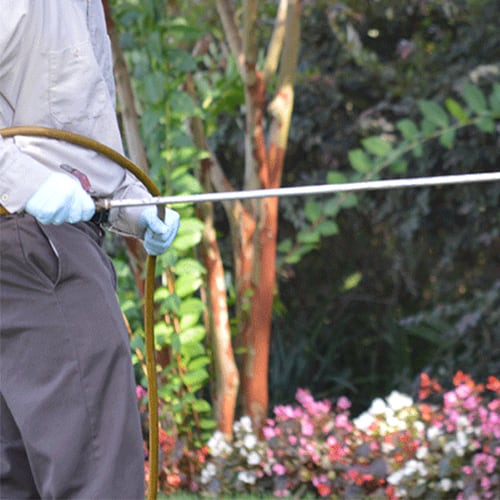
The vegetation growing inside your yard is most likely drawing groundhogs to your property. Store-bought repellents, which include a concentrated form of predator urine like fox or coyote urine, are generally available in liquid or granule form. If they want to live, groundhogs are aware to stay away from these scents, so they may seek refuge on your land. If you have children or pets, or simply don’t want to use harmful chemicals, this is a good strategy to employ. Remember that repellents have a short lifespan and must be used in conjunction with other protective tactics to keep groundhogs at bay.
How To Use a Repellent
- Read the instructions on the bottle you’ve purchased to determine how much to use and how often you need to replace it.
- Sprinkle or spray the substance around the groundhog burrow and the plants that have been eaten.
- Continue to monitor your plants to determine the products’ efficacy.
3. Trapping
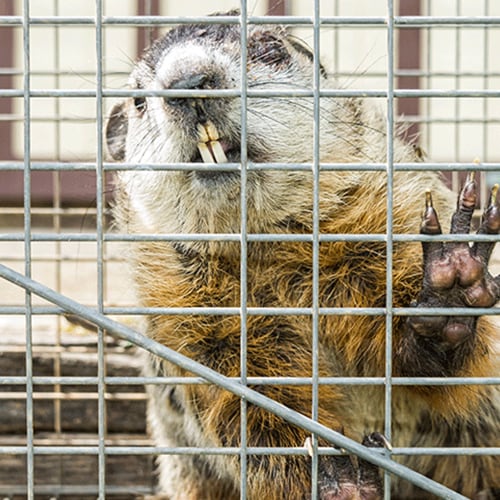
One of the most effective and efficient ways to get rid of groundhogs on your property is by setting groundhog cage traps. These traps will take care of your problem and the groundhogs won’t likely return when used in conjunction with prevention methods.
How to Use a Groundhog Trap
- Check to see if there are any local or state regulations about trapping and releasing groundhogs in your area.
- Before attempting to set up a live trap, read the instructions thoroughly and make sure you know how to do it properly.
- Set the trap carefully during the day (when groundhogs are active), wearing gloves to prevent your scent from being detected. If you don’t know how to set up a trap properly, some may operate with spring-loaded mechanisms and be dangerous.
- Place the trap near the entrance of the groundhog burrow and disguise it with dirt and leaves.
- Fruits or veggies should be used to bait the live trap. Groundhogs enjoy eating vegetation, so you can even utilize parts of it in your yard.
- Check the trap every day to see if you’ve caught a groundhog. It can dehydrate or injure itself trying to get out if a groundhog sits in it for too long.
- Follow the instructions for releasing a groundhog issued by state and local governments. Wildlife should most likely be set free in a wooded region thousands of yards distant from dwellings.
Pro Tip
- Place a brick or other heavy object on top of the groundhog cage after you’ve set it up so that the groundhogs can’t easily tip it over once they’re inside.
- Place a sheet or cloth over the trap while transporting it to calm the groundhog being transported.
- Unless you have experience handling wild animals, get assistance from someone to release the groundhog and ensure that you’re using adequate precautionary steps, such as wearing gloves, long sleeves, and long pants.
When To Call a Prefesional

Many of the above techniques, as well as other methods too difficult for you to perform on your own, will be used by a groundhog control specialist. Before deciding on the finest possible treatment strategy for your problem, he or she will inspect your property and assess the damage. These professionals are familiar with state and municipal laws governing safe andhumane groundhog removal.
The job of setting up the trap and handling the groundhog may be better suited for a trained professional, especially when it comes to trapping. Many wildlife removal businesses offer satisfaction guarantees, meaning that they’ll continue attempting to solve the issue until you are satisfied or get your money back.